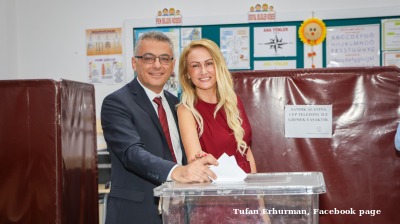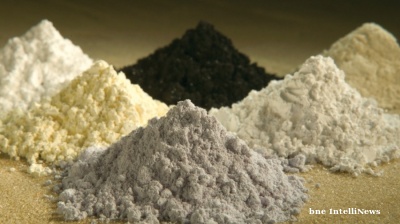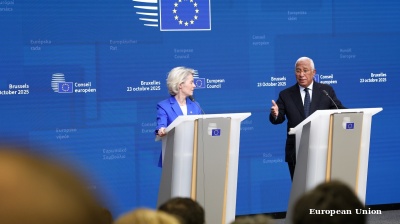Ukraine heads to the polls again for parliamentary elections on July 21, and expectations are building of another pro-reform vote to follow Volodymyr Zelenskiy’s landslide victory in the run off of the presidential election in April.
While little was known of Zelenskiy’s policy orientation back in the run up to the presidential election, his initial steps as president have been firmly towards reform – backing Ukraine’s continued Western orientation, including pushing on with EU integration and closer ties with NATO.
Initial hires into his team were admittedly mixed with clear concerns and question over the appointment of Andrey Bohdan as head of the presidential administration, given his past ties to the controversial oligarch Igor Kolomoisky. But then encouraging signs with proven reformers, including Alex Danylyuk and Aivaras Abromavicius given prominent positions as head of the national security council and defence production/procurement agency.
On key reform issues, Zelenskiy has thus far come out on the right, reform side – including on the issue of asset/wealth declarations, which had looked to stall the International Monetary Fund (IMF) programme, and therein continued engagement with the IMF (talk of a new revamped programme after elections) but also the National Bank of Ukraine (NBU) independence (seemingly rowing back from a hint during the campaign to change the central bank governor), and suggesting even that he will side with the state as opposed to former owners in the on-going tryst over the now disputed nationalisation of Privatbank – and rejecting former Kolomoisky’s suggestion that Ukraine defaults on its debts and kicks the IMF out.
So far Zelenskiy’s performance seems to still be appreciated by the voters, with opinion polls showing high personal popularity ratings – around two thirds still indicating favourable perceptions of the new president.
And the same polls suggesting that Zelenskiy’s party, Servant of the People (SoP), will top the polls in parliamentary elections. Polls are generally showing SoP with a 45-48% share of the vote, and then 4-5 parties expected to pass the 5% threshold to secure parliamentary representation.
The pro-Russian “Opposition Platform for Life” (OPfL) is polling second around 11-14%, then former president Petro Poroshenko’s European Solidarity around 7-10%, Yulia Tymoshenko’s Fatherland on 6-7%, and then pop star Svyatoslav Vakarchuk’s “Voice” on 4-7%, with Strength and Honour of the centrist former national security chief Ihor Smeshko also polling on/around the 5% mark.
From the above it still seems that around three quarters or more of the population are still voting for parties with a pro-European orientation – notable here that despite all the disappointment on the economy/reform front since the Euromaidan, support for EU accession has been rock solid around the two thirds mark, and support for NATO membership has increased from single digits, to now a majority.
It is notable that both SoP and Voice have adopted a strategy of only building their lists with candidates who have never served in the Rada before, which guarantees a new fresh look to the parliament.
That said, while the Rada supported a new electoral law in a bill approved earlier on July 11, moving to a full proportional representation system, these rules only come in for the election after this one.
This election will hence be determined by a joint proportional representation/constituency based system, which has tended to bias candidates representing oligarchic interests. The constituency-based system does tend to benefit the dominant party also in the proportional representation system, and if SoP polls in the 45-48% range, it would be in a very good position to take a majority in parliament.
This could be the first time ever, if achieved, since Ukrainian independence where a single party secures a majority – good news if Zelenskiy is really reform orientated.
That said, my base case would be SoP falls short of a majority and forms a coalition, most likely with Voice, but perhaps even Fatherland – but in any case a pro-European party.
Voice’s more radical reform orientation would make that scenario a best case – and with Fatherland I guess there would be concern that Yulia Tymoshenko would demand the post of prime minister as the price for Fatherland’s cooperation. Given her chequered track record in office markets might not be so appreciative of this – and especially as some reform members of the Zelenskiy team might be reluctant to serve in a Tymoshenko cabinet.
Fortunately Ukraine goes into the elections, with the macro story appearing solid and even improving – acclaim therein to the sound policies of the NBU and the Ministry of Finance.
Ukraine’s economy recovering
Growth: Real GDP growth came in around 2.5% in Q1, after 3.3% growth for the full year in 2018, but with a good harvest, and improving confidence indicators, expectations are building that we could see an acceleration in growth through the year, with the NBU signalling recently that they may increase their 2.5% growth assumption for the full year. The cabinet of ministers recently suggested real GDP growth accelerating to 3.3% in 2020, 3.8% in 2021 and 4.1% in 2022.
If elections run smoothly, a reform administration is formed quickly cementing a new deal with the IMF and rolling out a reform agenda, I could easily see growth well above 3% this year, and even the above forecasts for 2020 – 2022 might prove overly cautious. Much will depend on critical reforms being rolled out covering the anticorruption agenda (a functioning anti-corruption court), land reform and broader momentum in improving the business environment – continued energy sector reform (utilities unbundling). And importantly no cock up in the handling of the challenge to the nationalisation of Privatbank.
Inflation: The NBU continues to run a tight and prudent monetary policy stance and this is bearing fruit in the fight against inflation. The consumer price inflation (CPI) has been sticky around the 10% level, but the headline CPI dropped to 9% in June, and with a good harvest, the UAH seeming stable and helped by very high real rates from the NBU (850bps, given the 17.50% base rate) prospects for further disinflation this year seems good. All this assumes that elections pass without incident, and tensions in the east remain subdued sufficient not to impact negatively on the UAH.
Public finance: The Ministry of Finance continues to run a tight ship, with the state budget in surplus still for the first five months of 2019, impressive given the electoral cycle. The revenue side has been struggling in recent months as the strong UAH moderated VAT receipts. That said, spending restraint, and lower debt service costs, should still keep the budget deficit for the full year around the 2% of GDP level – on par with the average 1.6-7% deficits maintained for 2017-18. Maintenance of moderate deficits, and real appreciation off the UAH has helped rein in the ratio of public sector debt/GDP, which fell to just 61% at the end of 2018, from over 80% in 2016. And in recent months, moves to improve the management of public debt with plans to create a Debt Management Office are already bearing fruit through much better communication/issuance strategy.
The move to boost domestic debt issuance at the expense of external issuance is entirely logical – given the high share and hence vulnerability from the high weight (60%) of external debt in total public debt. The messaging around this strategy certainly helped the Ministry of Finance successfully placed EUR1bn of new 7-year Eurobonds relatively cheaply (yield of 6.75%) and also has helped reduce Ukraine’s overall borrowing costs, with its dollar curve tightening by 70bps over the past month, and now 250bps YTD.
Improved management of domestic debt issuance/markets and Clearstream entry is also now producing strong foreign interest/inflows, helping to cut borrowing costs. Non-resident inflows to the domestic debt market have totalled more than UAH50bn, or close to $2bn year to date, taking their share of the total stock of domestic debt to just under 12% - still low by peer comparison.
Balance of payments: The portfolio inflows noted above have helped support the UAH, and enabled the NBU to increase FX reserves by $1.2bn in June, to $20.6bn or now 3.4 months of import cover. To put this into perspective, this is now four times the level at the time of the Euromaidan. It is even more impressive considering that much official borrowing was stalled over the course of 2017 and 2018 (or at least from April 2017 to the autumn of 2018).
The current account position is, meanwhile, much improved – posting a surplus of $257m for the first five months of 2019, an improvement on the $526m deficit in the year earlier period. Exports of agri-food products have been doing particularly well this year, and with a good harvest this looks set to be the story for the full year. But the continued game changer on the balance of payments and the current account remains worker remittances, which for January through May posted a $5.1bn surplus, up from $4.4bn over the same period of 2018, and well on track to beat the full year total of $11.5bn achieved in 2018, which was around 8-9% of GDP.
The downside is that this reflects the huge number of Ukrainians (perhaps as many as 5mn – of, which at least 1.2mn are thought to now be working in Poland) who now work overseas – and this is a brain drain to Ukraine, and notable creates tight labour markets in some sectors domestically in Ukraine. But the plus is these inflows are helping stabilise the BOP and the UAH ensuring macro-financial stability at home, which should ultimately help spur investment and growth in Ukraine.
Note the remarkable transformation in the current account position over the past decade for Ukraine – from a deficit of 9.2% of GDP in 2013 at the on-set of Euromaidan, to 3.8% of GDP in 2018, and perhaps something much lower this year. This turnaround has been driven partially by the surge in worker remittances, but also by energy sector reform/rationalisation cutting the gas import bill from $12bn per year to $2-3bn at present. But the improvement in the current account position looks structural – sure it will rise through 2019 and into 2020 as growth accelerates, but from relatively moderate starting levels.
All told Ukraine appears poised for a new/strong start, politically but also in terms of the macro story. Much will depend though on a new coalition quickly being formed in the Rada, then a reform oriented cabinet and an uptick in the reform agenda as noted about. But it should be said that the Ukrainian macro backdrop, political landscape and opportunity on the economic policy front is perhaps not this clement or hopeful for many years in my time covering Ukraine (32 years now!).
Zelenskiy and Ukraine have a wonderful opportunity now to impart transformational and really positive change in Ukraine – let’s hope for Ukrainians that they seize this opportunity.
Opinion

Don’t be fooled, Northern Cyprus’ new president is no opponent of Erdogan, says academic
Turkey’s powers-that-be said to have anticipated that Tufan Erhurman will pose no major threat.

COMMENT: Hungary’s investment slump shows signs of bottoming, but EU tensions still cast a long shadow
Hungary’s economy has fallen behind its Central European peers in recent years, and the root of this underperformance lies in a sharp and protracted collapse in investment. But a possible change of government next year could change things.

IMF: Global economic outlook shows modest change amid policy shifts and complex forces
Dialing down uncertainty, reducing vulnerabilities, and investing in innovation can help deliver durable economic gains.

COMMENT: China’s new export controls are narrower than first appears
A closer inspection suggests that the scope of China’s new controls on rare earths is narrower than many had initially feared. But they still give officials plenty of leverage over global supply chains, according to Capital Economics.




